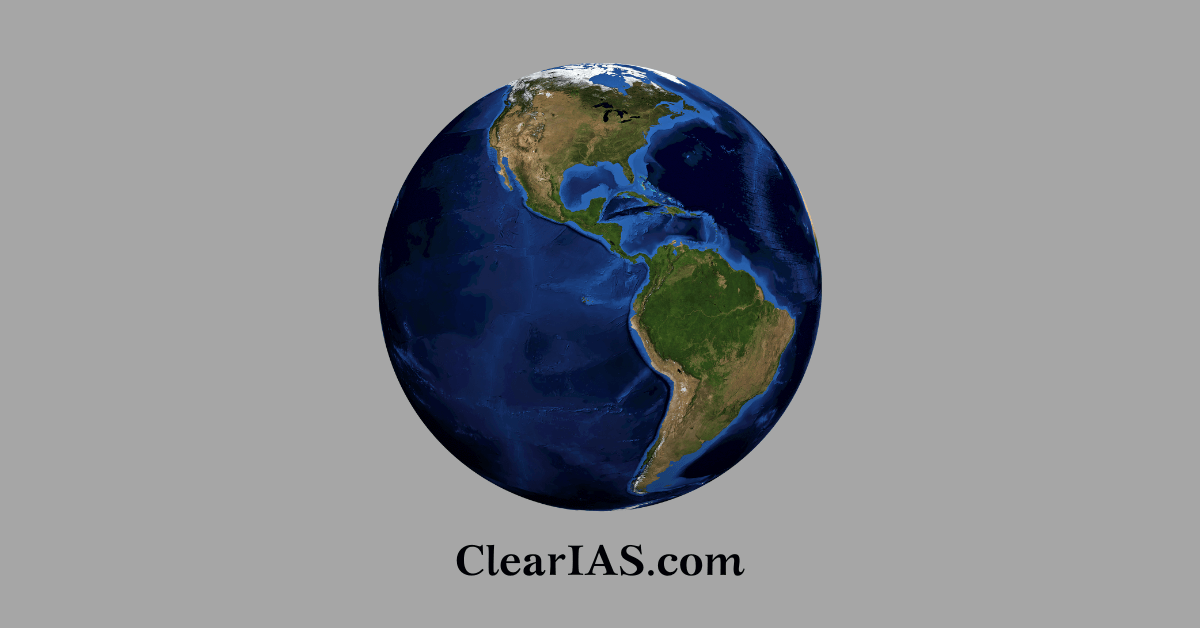 A general understanding of important geophysical phenomena is essential for a serious UPSC aspirant. This article will equip one with such knowledge as is essential for her/his future administrative journey.
A general understanding of important geophysical phenomena is essential for a serious UPSC aspirant. This article will equip one with such knowledge as is essential for her/his future administrative journey.
The term “geophysics” refers to the in-depth study of the physics of the Earth and its surrounding space. It uses quantitative physical techniques to discuss Earth. It is the study of the physical properties of the Earth, including its shape, gravitational and magnetic fields, internal structure, and composition. It also refers to the movements of the Earth, including plate tectonics, magma creation, volcanism, and rock formation.
We will be discussing briefly earthquakes, tsunamis, volcanic activity and cyclones in this article.
Earthquake
We often hear about earthquakes in the news. They have a huge potential for destruction wherever they occur. Do you know what causes earthquakes?
An earthquake is a quick shaking or trembling of the earth’s surface brought on by seismic waves or earthquake waves that are produced as a result of an abrupt movement (an abrupt release of energy) in the earth’s crust (earthquakes with shallow foci) or upper mantle (some shallow-focus and all intermediate and deep-focus earthquakes).
A seismograph, sometimes known as a seismometer, is a device to identify and document earthquakes.
To know more about earthquakes, click here
Tsunami
‘Tsunami’ is a Japanese word meaning, ‘harbour wave’. A tsunami is a succession of waves with extremely long wavelengths that occur in vast bodies of water, such as seas or lakes, as a result of a significant disturbance above or below the water’s surface or as a result of the displacement of a significant amount of water.
Although the Moon and Sun’s attractions have no bearing on how they arise, they are commonly referred to as tidal waves due to their long wavelengths.
A tsunami can be produced by earthquakes (such as the Indian Ocean Tsunami in 2004), volcanic eruptions (such as the tsunami brought on by Krakatoa’s violent eruption in 1883), landslides (such as the tsunami brought on by the collapse of a portion of Anak Krakatoa in 2018), underwater explosions, meteorite impacts, etc.
To know more about tsunamis, click here
Volcanic Activity
A volcano is an opening in the earth’s crust through which gases, molten rock materials (lava), ash, steam etc. are emitted outward in the course of an eruption. Such vents or openings occur in those parts of the earth’s crust where the rock strata are relatively weak. Volcanic activity is an example of endogenic process. Depending upon the explosive nature of the volcano, different landforms can be formed such as a plateau (if the volcano is not explosive) or a mountain (if the volcano is explosive in nature).
To know more about volcanoes click here
Cyclones
Cyclones are the centers of low pressure. They are surrounded by closed isobars having increasing pressure outward.
The wind circulation is from outside towards the central low pressure. The inward flow of air is due to the pressure gradient force and the lowest pressure at the centre.
Due to Coriolis force, blowing winds are deflected from their paths- rightwards in the Northern hemisphere and leftward in the Southern hemisphere. Thus, they rotate anti-clockwise in the Northern hemisphere and clockwise in the southern hemisphere.
To know more about cyclones, click here
El Nino and La Nina
You might have heard about El Nino and La Nina. The El Niño/La Niña Southern Oscillation (ENSO) has a major influence on climate patterns in various parts of the world.
In addition to changes in the atmosphere, this naturally occurring geophysical phenomenon is caused by shifting ocean temperatures in the central and eastern equatorial Pacific.
El Nino
El Niño means Little Boy or Christ Child in Spanish.
The extraordinary warming of surface waters in the eastern tropical Pacific Ocean is referred to as El Nino, a climate pattern.
It is the “warm phase” of a larger phenomenon known as the El Nino-Southern Oscillation (ENSO).
It happens more often than La Nina.
La Nina
The unusual cooling of the tropical eastern Pacific is referred to as La Nina, the “cold phase” of ENSO.
Contrary to El Nino, which typically lasts little longer than a year, La Nina occurrences may last between one and three years.
El Nino and La Nina peak during the winter in the Northern hemisphere.
To know more about El Nino and La Nina click here
Heatwave
According to the IMD, a heatwave is defined as a maximum temperature of at least 40 degrees Celsius for plains, 37 degrees Celsius for coastal regions, and at least 30 degrees Celsius for hilly regions.
To know more about heat waves click here
Atlantic Meridional Overturning Circulati0n (AMOC)
The Atlantic Meridional Overturning Circulation (AMOC) is a major ocean current system that transports warm surface waters from the tropics toward the northern Atlantic and colder deep waters that are part of the thermohaline circulation, southward. One of the main ways the ocean circulates heat, salt, carbon, and nutrients throughout the world’s oceans is through overturning circulation.
To know more about AMOC click here
Hot Springs
A hot spring, often referred to as a geothermal spring, is an actual water spring that erupts as a result of heated groundwater. Either magma within the Earth’s crust or fault movement within the crust causes heat to be created.
Landslides
The movement of a mass of rock, rubble, or dirt down a slope is referred to as a landslide. Landslides are a sort of “mass wasting,” which refers to any downward movement of soil or rock caused by gravity alone.
A landslide is a natural occurrence that occurs when soil, rock, or other debris falls as a result of gravity.
It is brought on by a number of terrain-specific geo factors (such as slope, lithology, rock structure, land use/cover, geomorphology, etc.), but is typically brought on by torrential rain or earthquake shocks.
Glacial Lake Outburst Flooding (GLOF)
A glacial lake outburst flood (GLOF) occurs when a moraine dam or ice-dam glacial lake fails, releasing meltwater. They result in terrible floods downstream, resulting in significant loss of life and property.
GLOFs have three main characteristics:
- There is an abrupt release of water
- These are typically brief episodes that last for a few hours to many days.
- They create significant river outflows downstream.
To know more about GLOF click here
Cloudbursts
Cloudbursts are localised, intense downpour occurrences that last only for a short duration.
It is a weather phenomenon where unanticipated precipitation exceeds 100 mm per hour across an area of around 20 to 30 square kilometres.
To know more about cloudbursts click here
Article written by: Caroline








Leave a Reply